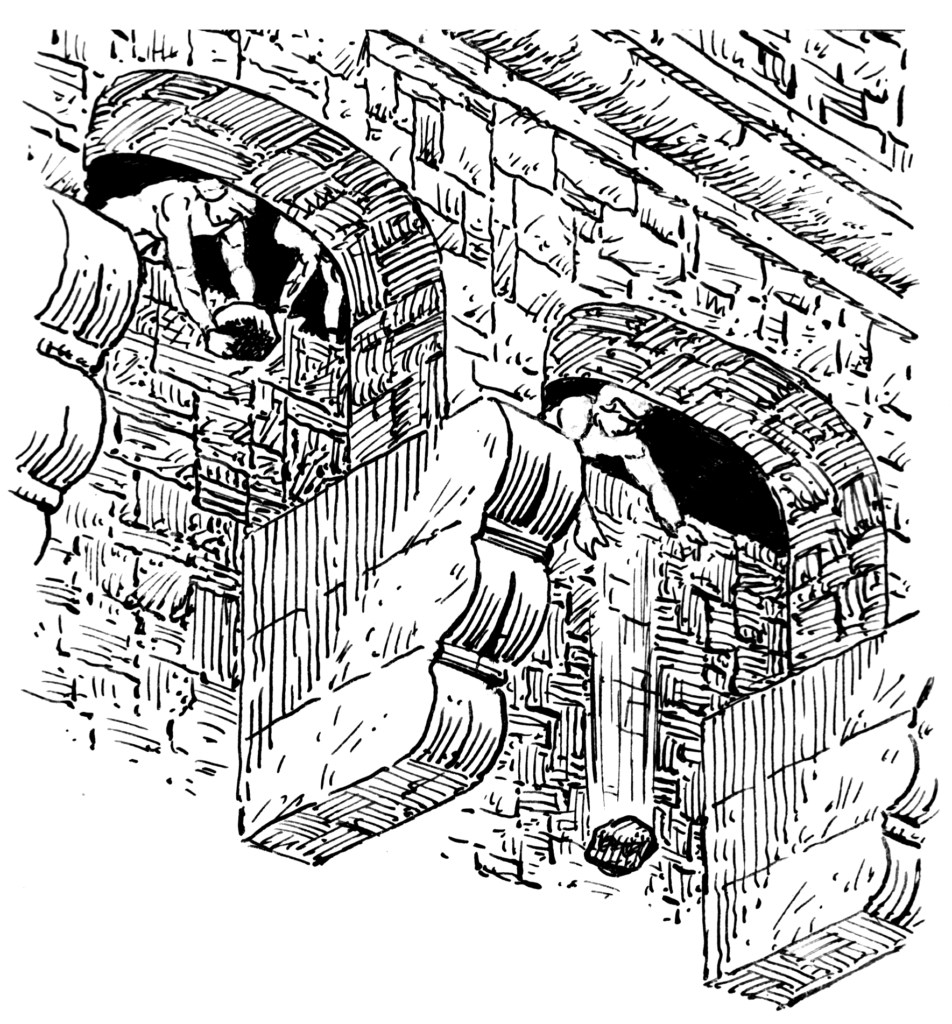Cover in Dungeons and Dragons can come in different forms. A person might be on a tower or wall. They could be hiding behind parapets. Or they could be firing through an arrow slit. They might be pouring hot oil on the castle invaders who are trying to use a battering ram on the castle gate. Or they could be throwing rocks down on the people below. In any of those situations anyone casting a spell against them or firing an arrow at them will face the effects of cover.
Medieval castles used many forms of defense to protect those within from the invaders outside the castle. Some of these defenses include:
- Towers
- Parapets
- Arrow Slits
- Barbicans
- Portcullis
- Moats
- Ramparts
- Gatehouses
- Murder Holes
- Battlements
The medieval strategist was prepared for the invaders attempts to attack those defending the castle. They would have been less prepared to fend off the effects of wizards. But the castle designers in the fantasy worlds of Dungeons and Dragons surely know of the potential dangers of magic. While they might not be able to completely protect a castle from magic they can certainly give the defenders some advantage and protection from it.
Use of Cover in 1st Edition AD&D
The DMG provides a general table regarding the use of cover against missles:
- 25% cover confers +2 to the effective armor class of the defender
- 50% cover confers +4 to the effective armor class of the defender
- 75% cover confers +7 to the effective armor class of the defender
- 90% cover confers +10 to the effective armor class of the defender
For concealment the DMG provides the following:
- 25% concealment provides +1 to the effective armor class of the defender
- 50% concealment provides +2 to the effective armor class of the defender
- 75% concealment provides +3 to the effective armor class of the defender
- 90% concealment provides +4 to the effective armor class of the defender
A man on a walled parapet would have 25% cover. A man protected up to the waist would have 50% cover or concealment. A person behind thick brush might also have 50% cover or concealment. Arrow slits would provide 90% cover. A person firing from a narrow window might have 75% cover or concealment. Clearly these ideas leave a lot in the hands of the Dungeon Master to determine.
As for cover and spell casting the Dungeon Master Guide discusses this in a small blurb on page 65. Hard cover adds the armor class bonuses listed above to the potential saving throws of the victim. A saving throw by a person with 90% cover might have no effect at all if their saving throws are made (instead of the half damage commonly taken in 1st Edition from spells saved against).

Use of Cover in 5th Edition Dungeons and Dragons
Fifth edition is not entirely silent on this subject. Dungeon Master Guide page 251 discusses it a bit. Specifically it goes into the use of miniatures and a battle map and determining if cover is in play by tracing the position of the opponents versus the fixed objects that might provide that cover. Page 272 talks about missiles that miss a covered target hitting cover.
Now although I did not find a reference to this in the DMG I did find a reference in the System Resource Document for 5th Edition that describes the effects of cover. Using the page 251 analysis to determine what amount of cover a person has one can use the following to determine the effect of it:
- Half Cover confers +2 bonus to AC and to dexterity saving throws
- Three quarters cover confers +5 to AC and to dexterity saving throws
- Total cover confers complete immunity to an attack or spell except…..for an area of effect spell or attack that might reach it’s intended target
Half cover might include being behind a wall, a tree trunk, a piece of furniture or even hiding behind another creature (friend or foe).
Three quarters cover might include being behind a portcullis, using an arrow slit or being behind a thick tree trunk.
Total cover means being entirely concealed from the enemy.
A link to the System Resource Document
Use of Cover in Dungeons and Dragons
It is entirely reasonable to expect that your non player characters and creatures will use cover to their advantage to protect themselves from your adventurers and from other enemies. Knowing these rules can make your creatures more challenging to your adventurers. A kobold hiding behind an arrow slit and firing arrows is far more dangerous than one holding a sword and fighting up close and personally. An orc throwing boiling oil on adventurers trying to break into the castle is more effective than one meeting the challenge directly with a spear. Your monsters should fight smart! Your players certainly will.



